Слайд 2
Pachshenko
Galina Nikolaevna
Associate Professor of Information System Department,
Candidate

of Technical Science
Слайд 4Topics
Single-layer neural networks
Multi-layer neural networks
Single perceptron
Multi-layer perceptron
Hebbian Learning Rule
Back propagation
Delta-rule
Weight adjustment
Cost Function
Сlassification

(Independent Work)
Слайд 5 Single-layer neural networks

Слайд 7Single perceptron
The perceptron computes a single output from multiple real-valued inputs by forming a linear combination

according to its input weights and then possibly putting the output through activation function.
Слайд 8Single perceptron.
Mathematically this can be written as

Слайд 10Task 1:
Write a program that finds output of a single perceptron.
Note:
Use bias.

The bias shifts the decision boundary away from the origin and does not depend on any input value.
Слайд 11Multilayer perceptron
A multilayer perceptron (MLP) is a class of feedforward artificial neural network.

Слайд 13Structure
• nodes that are no target of any connection are called input
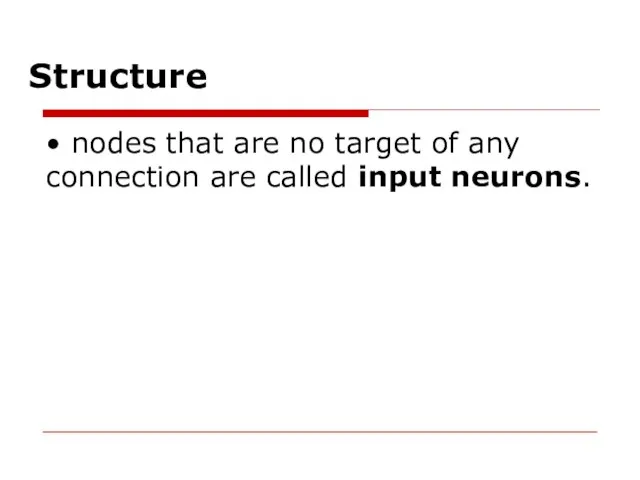
neurons.
Слайд 14• nodes that are no source of any connection are called output
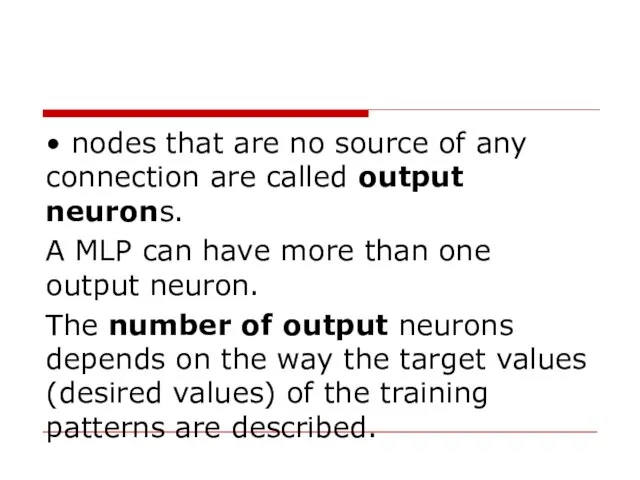
neurons.
A MLP can have more than one output neuron.
The number of output neurons depends on the way the target values (desired values) of the training patterns are described.
Слайд 15• all nodes that are neither input neurons nor output neurons are
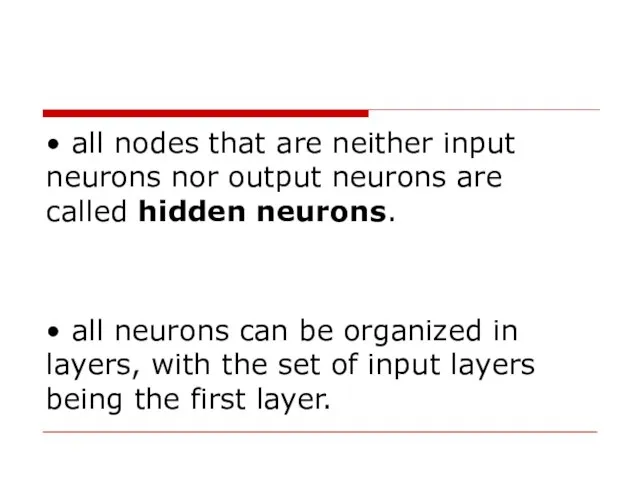
called hidden neurons.
• all neurons can be organized in layers, with the set of input layers being the first layer.
Слайд 16The original Rosenblatt's perceptron used a Heaviside step function as the activation
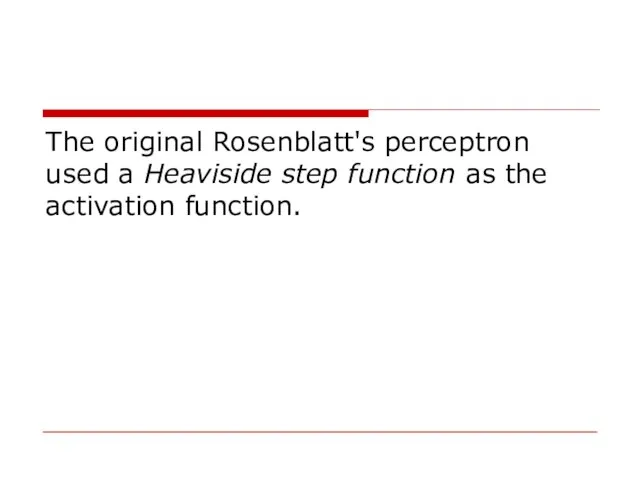
function.
Слайд 17Nowadays, in multilayer networks, the activation function is often chosen to be
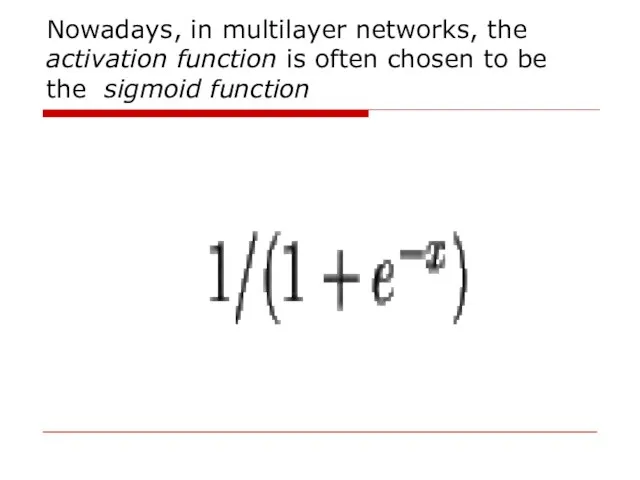
the sigmoid function
Слайд 20These functions are used because they are mathematically convenient.
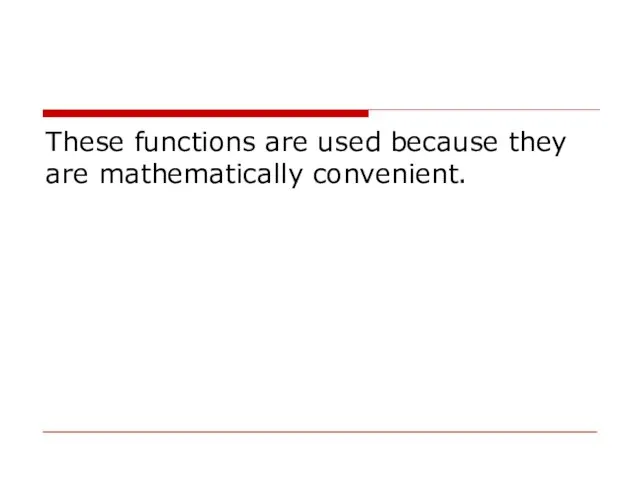
Слайд 21An MLP consists of at least three layers of nodes.
Except for the
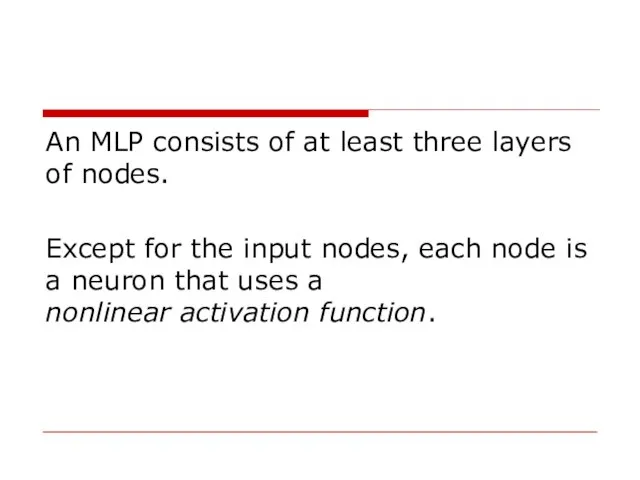
input nodes, each node is a neuron that uses a nonlinear activation function.
Слайд 22MLP utilizes a supervised learning technique called backpropagation for training.
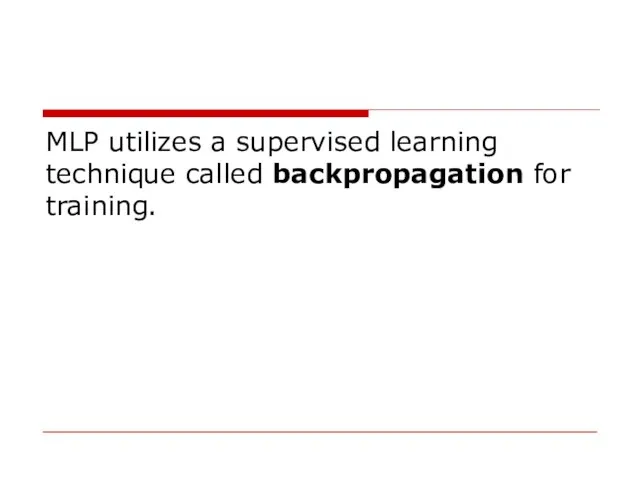
Слайд 23Hebbian Learning Rule
Delta rule
Backpropagation algorithm
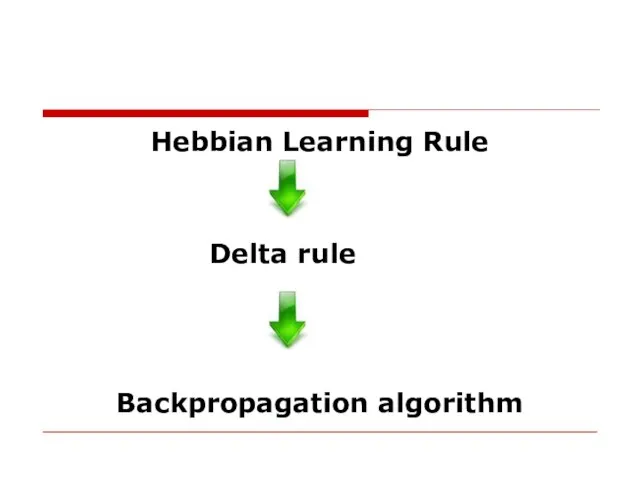
Слайд 24
Hebbian Learning Rule
(Hebb's rule)
The Hebbian Learning Rule (1949)
is a learning rule that
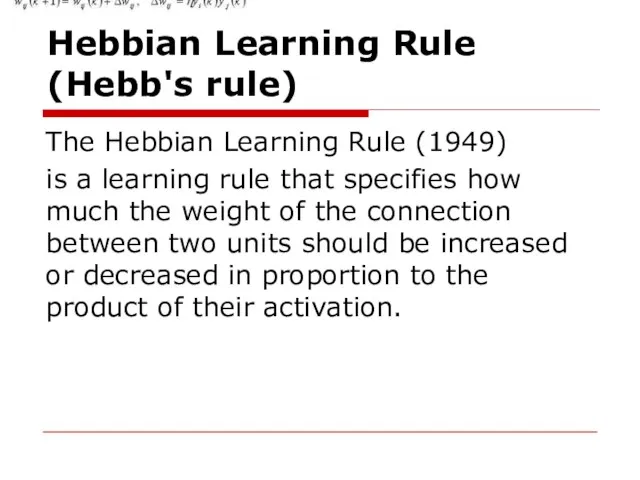
specifies how much the weight of the connection between two units should be increased or decreased in proportion to the product of their activation.
Слайд 25Hebbian Learning Rule
(Hebb's rule)
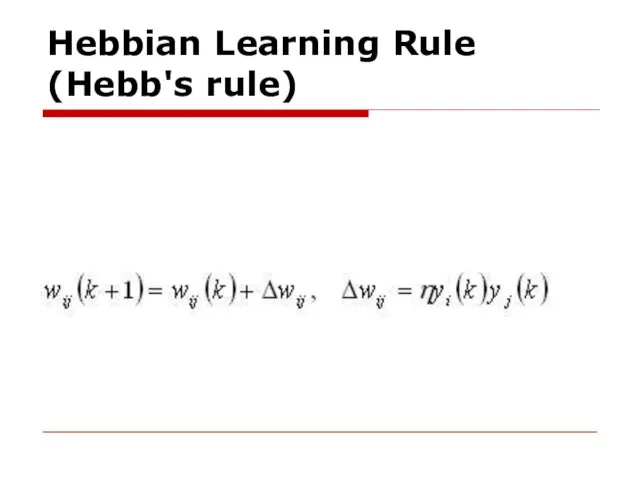
Слайд 28The backpropagation algorithm was originally introduced in the 1970s, but its importance
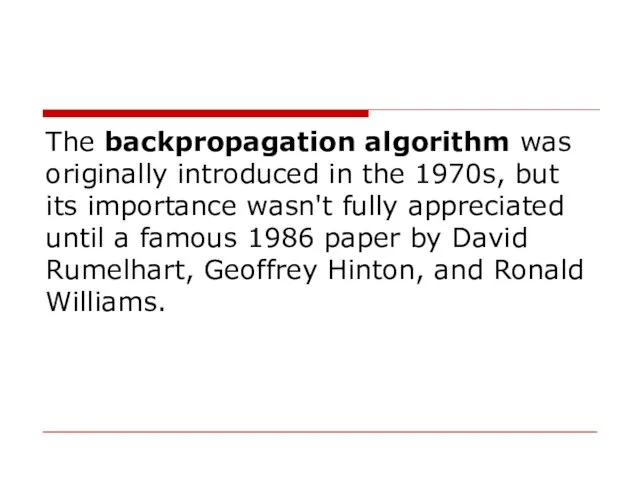
wasn't fully appreciated until a famous 1986 paper by David Rumelhart, Geoffrey Hinton, and Ronald Williams.
Слайд 29That paper describes several neural networks where backpropagation works far faster than
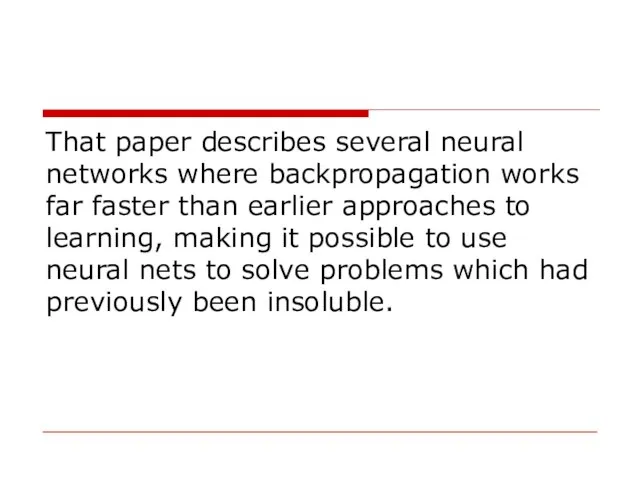
earlier approaches to learning, making it possible to use neural nets to solve problems which had previously been insoluble.
Слайд 30Supervised Backpropagation – The mechanism of backward error transmission (delta learning rule)
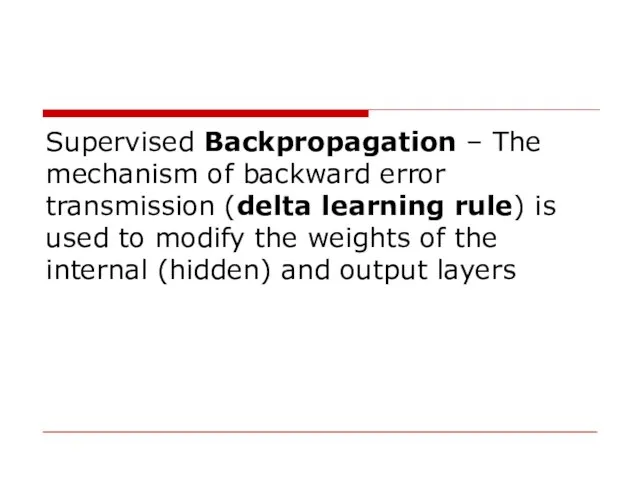
is used to modify the weights of the internal (hidden) and output layers
Слайд 31Back propagation
The back propagation learning algorithm uses the delta-rule.
What this does
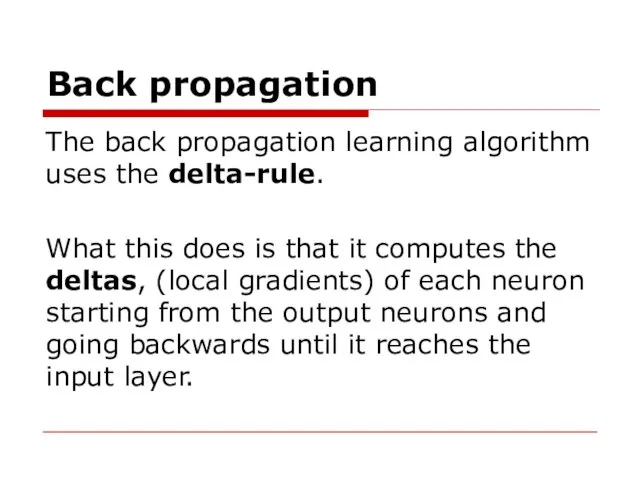
is that it computes the deltas, (local gradients) of each neuron starting from the output neurons and going backwards until it reaches the input layer.
Слайд 32The delta rule is derived by attempting to minimize the error in
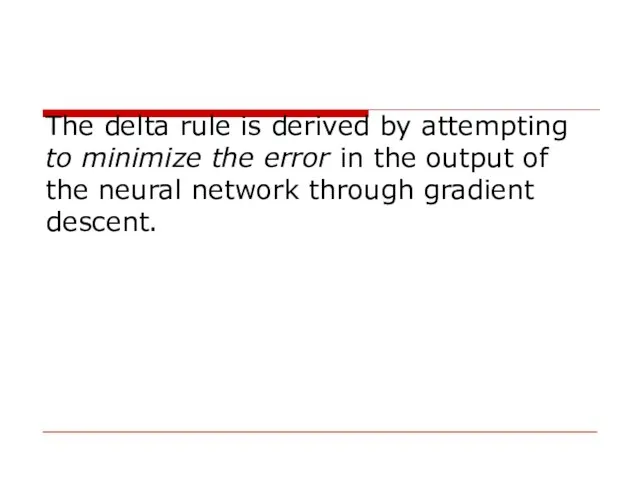
the output of the neural network through gradient descent.
Слайд 33To compute the deltas of the output neurons though we first have
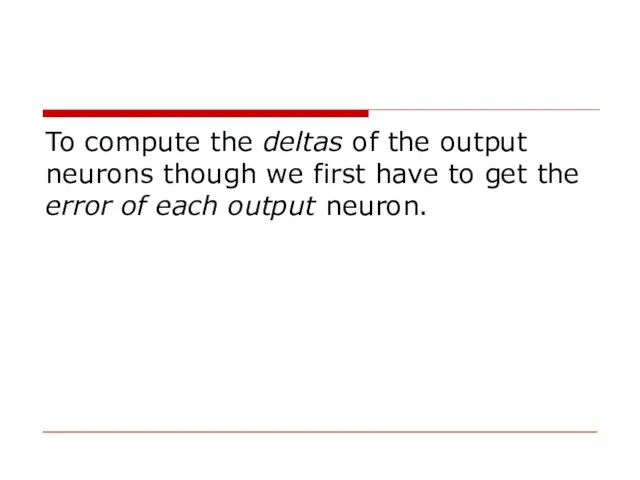
to get the error of each output neuron.
Слайд 34That’s pretty simple, since the multi-layer perceptron is a supervised training network
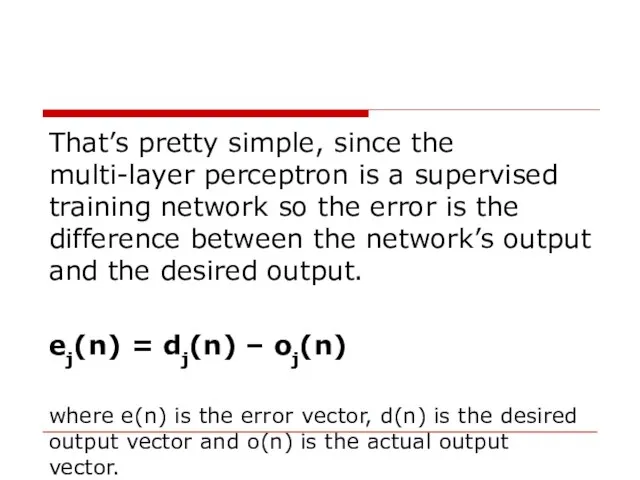
so the error is the difference between the network’s output and the desired output.
ej(n) = dj(n) – oj(n)
where e(n) is the error vector, d(n) is the desired output vector and o(n) is the actual output vector.
Слайд 35Now to compute the deltas:
deltaj(L)(n) = ej(L)(n) * f'(uj(L)(n)) ,
for neuron j
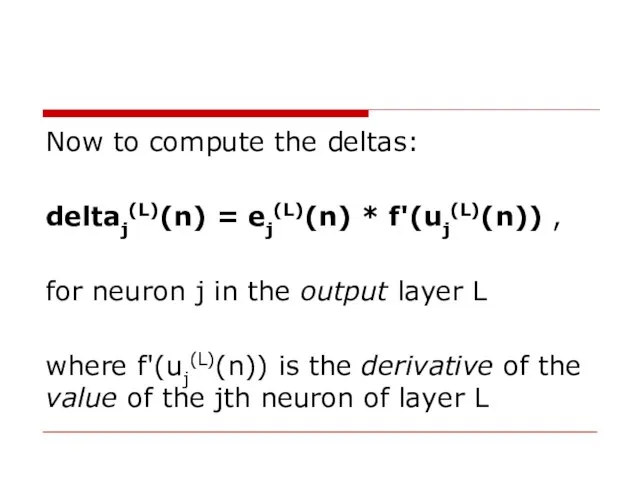
in the output layer L
where f'(uj(L)(n)) is the derivative of the value of the jth neuron of layer L
Слайд 37Weight adjustment
Having calculated the deltas for all the neurons we are now
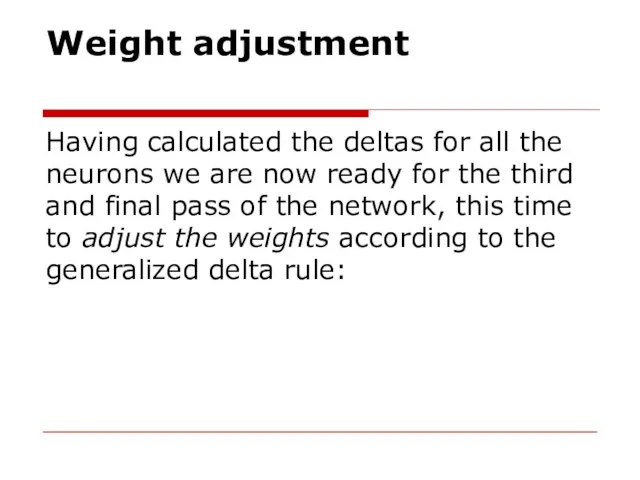
ready for the third and final pass of the network, this time to adjust the weights according to the generalized delta rule:
Слайд 40Note: For sigmoid activation function
Derivative of the function:
S'(x) = S(x)*(1 -
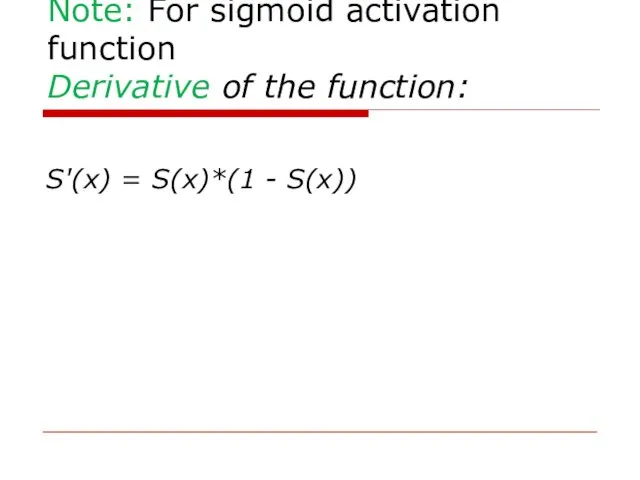
S(x))
Слайд 42
Cost Function
We need a function that will minimize the parameters over our
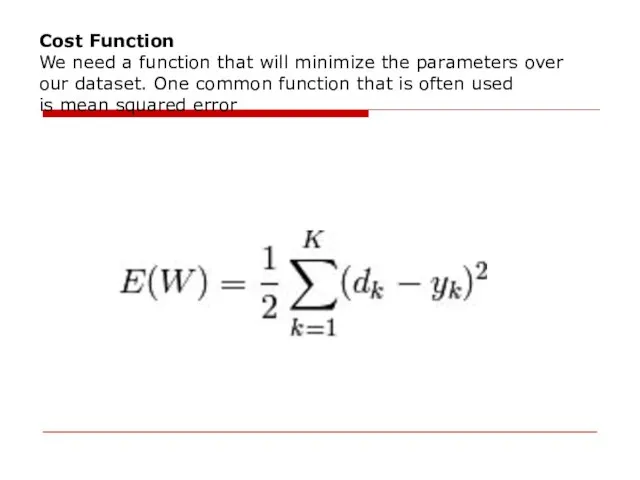
dataset. One common function that is often used is mean squared error
Слайд 43Squared Error: which we can minimize using gradient descent
A cost function is
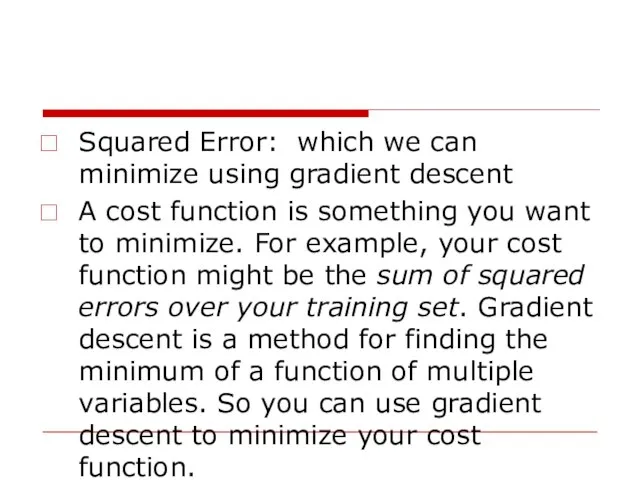
something you want to minimize. For example, your cost function might be the sum of squared errors over your training set. Gradient descent is a method for finding the minimum of a function of multiple variables. So you can use gradient descent to minimize your cost function.
Слайд 44Back-propagation is a gradient descent over the entire networks weight vectors.
In practice,
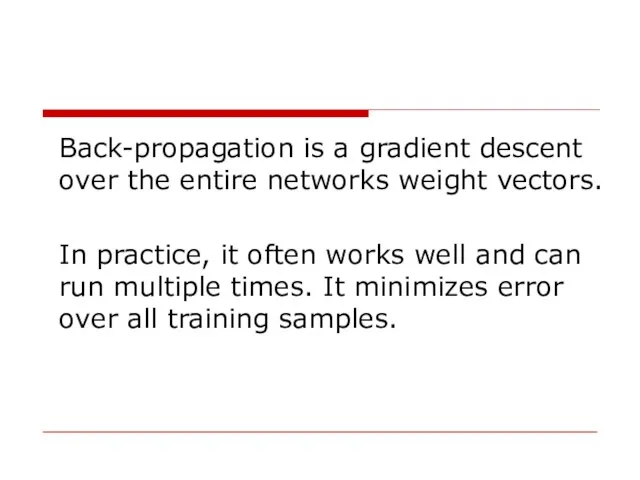
it often works well and can run multiple times. It minimizes error over all training samples.
Слайд 45Task 2:
Write a program that can update weights of neural network using
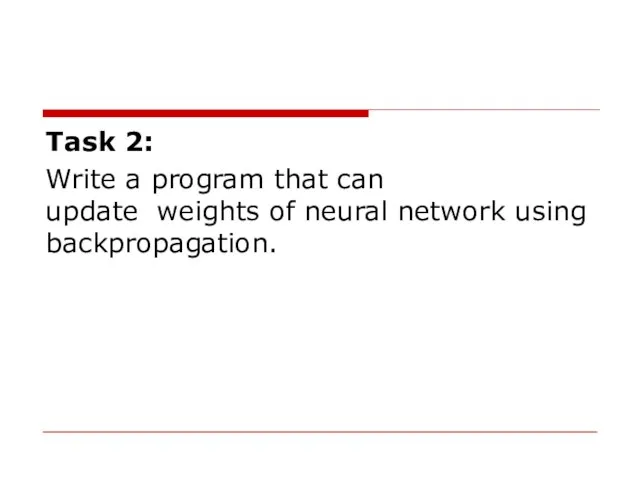
backpropagation.
















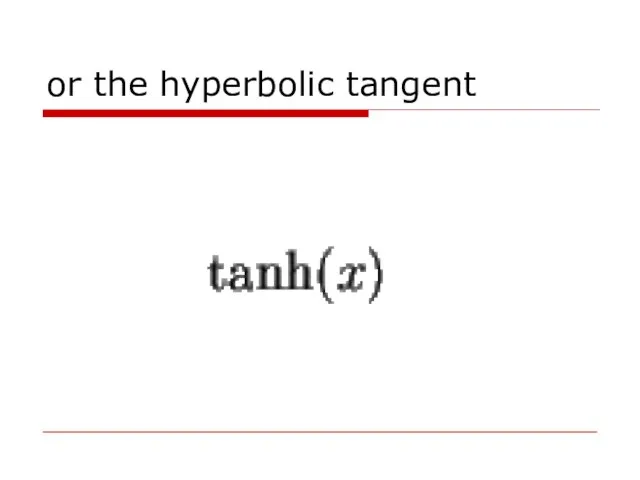
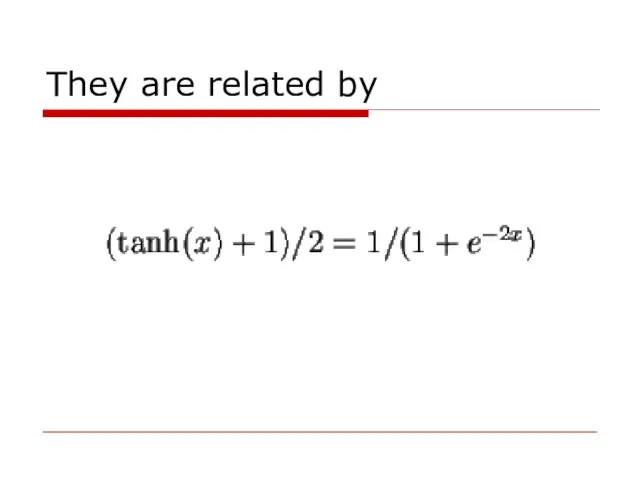






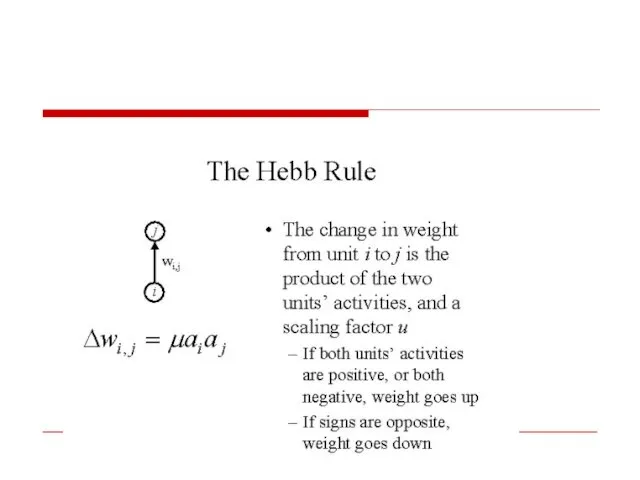
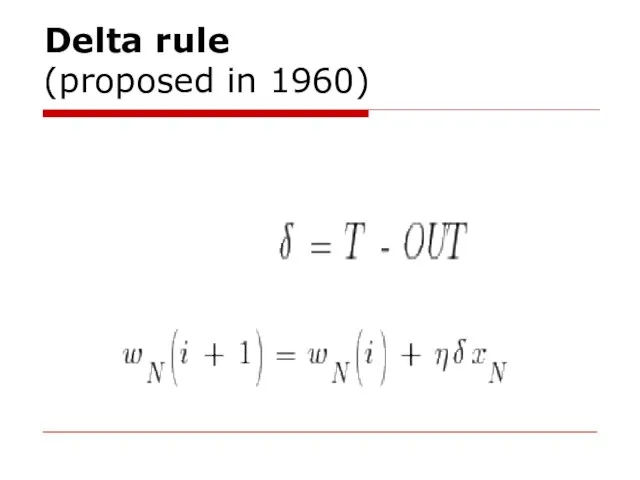








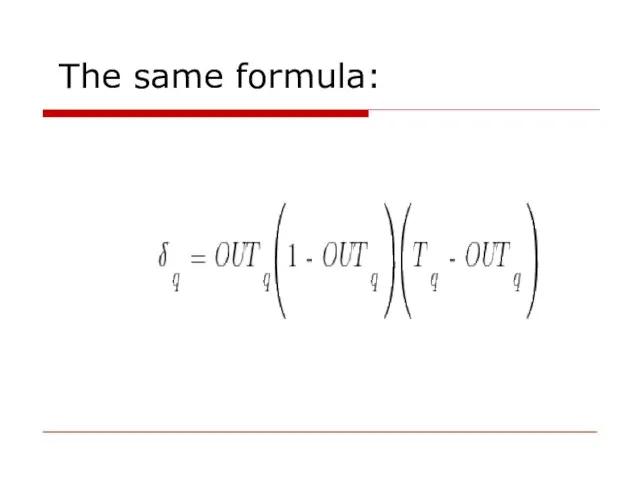

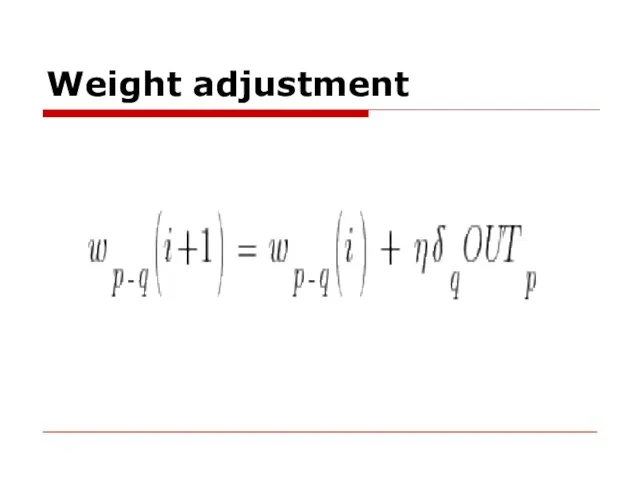
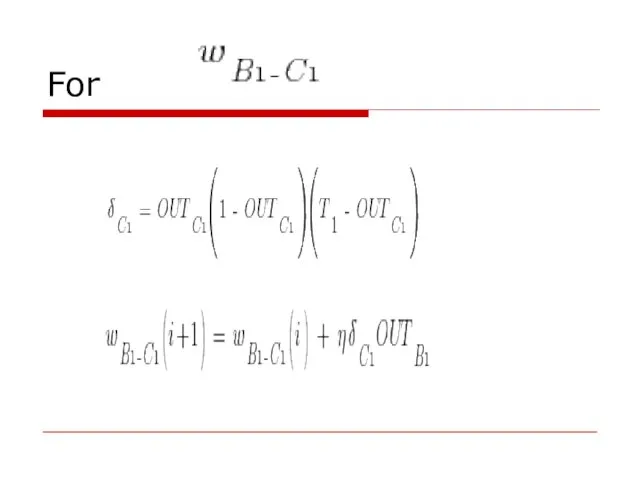

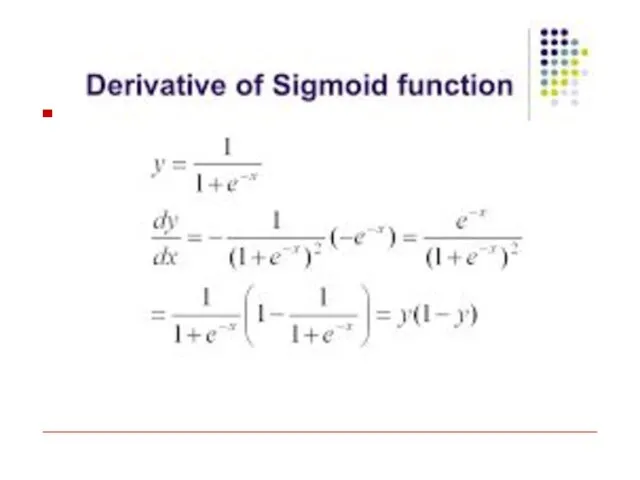




 5 Java Memory Model
5 Java Memory Model Формирование изображения на экране монитора. 7 класс
Формирование изображения на экране монитора. 7 класс Обучение программе Ассемблер
Обучение программе Ассемблер Уровни и типы требований
Уровни и типы требований Лекция 5 (Принципы передачи по сети)
Лекция 5 (Принципы передачи по сети) Введение в теорию алгоритмов
Введение в теорию алгоритмов Управление проектами в области ИТ
Управление проектами в области ИТ Виды монтажных склейки переходов
Виды монтажных склейки переходов Сравнительный анализ сайтов. Сайты вузов
Сравнительный анализ сайтов. Сайты вузов Интерактивный путеводитель
Интерактивный путеводитель Excel
Excel Носители информации. Кодирование информации. Способы кодирования информации
Носители информации. Кодирование информации. Способы кодирования информации Защита информации
Защита информации Прикладной уровень
Прикладной уровень Выражения в языке C#. Операции в выражениях в языке C#
Выражения в языке C#. Операции в выражениях в языке C# Коды. 8-11 класс
Коды. 8-11 класс Hikikomori хикка
Hikikomori хикка Этика и этикет в электронной среде общения
Этика и этикет в электронной среде общения Работа со словарями. Библиотека Date в Python
Работа со словарями. Библиотека Date в Python Виды кабелей для передачи информации
Виды кабелей для передачи информации Arduino. Синтаксис функции digitalWrite
Arduino. Синтаксис функции digitalWrite Технология создания буклета средствами специальной программы Microsoft Publixher
Технология создания буклета средствами специальной программы Microsoft Publixher Артефакты тестирования
Артефакты тестирования Стили слоя в Photoshop
Стили слоя в Photoshop Файловая система. Задача
Файловая система. Задача Информационные технологии. Информатизация
Информационные технологии. Информатизация Что изучает информатика
Что изучает информатика Регистрация в Антиплагиат
Регистрация в Антиплагиат